The Why
How we assist companies with Geomarketing
Geomarketing uses the collection of location-based data to better inform overall marketing direction. GIS techniques combine with more traditional marketing analysis to demystify consumer behavior. This allows you to target even more specific demographics, in turn optimizing your business strategies.
What is Geomarketing?
Geomarketing is a spatial technology that uses geographic information systems, or GIS, to refine marketing efforts to target potential customers. It achieves this by identifying the correct customer profiles and market segments, by location.
The location element is the differentiator in geomarketing; typical techniques will identify potential customers by age, profession, and other social attributes, but geomarketing can refine profiles further to specific locations.
Understanding and tracking customer movement is also a key principle of geomarketing. This will focus the evaluation and measurement of campaigns and demographics to a more granular level. Once insights are received, you can create more detailed and accurate customer profiles and campaigns that will get your brand in front of them.
Using geomarketing tools will help you find new opportunities, develop products and services that people want and improve your customer service by better understanding each customer and their needs.
How the HERE platform boosts your company's performance
Decrease the cost of running your fleet by 20%
Reduce re-routing time by up to 90%
More Sustainable
Ten great reasons to use geomarketing tools
- To understand your customers better and target them more precisely. You’ll create regionally targeted advertisements or promotions for customers and regularly review your operations to ensure better reach. Geomarketing will inform you of the customer’s preferences and purchasing history, not just where they reside and shop.
- When you want to expand your physical market presence. If your business has physical outlets, geomarketing will identify suitable locations as you look to open additional branches. It does this by analyzing foot traffic, local competition, and the strength of your potential customer base.
- If your business includes delivery services, geomarketing tools can optimize delivery routes to save time, fuel, and operational costs.
- To introduce regionalization as part of your business e-commerce strategy. Whether your transactions take place online, at a sales location – or both – you can create personalized deals and recommendations using data from previous purchases and intelligence relating to a customer’s proximity to stores.
- You want to start making concrete, data-based decisions for your business. Beyond regional intelligence, geomarketing helps you to make a case for creating more effective, informed marketing and improved customer engagement, based on solid data.
- If you provide emergency response or crisis relief services, you will be able to quickly analyze issues, allocate resources and manage relief efforts.
- For event planning and promotion, geomarketing tools can help you to select the best locations based on potential attendee attributes and areas of interest.
- Territory management is simplified for sales teams. Geomarketing makes it easier to assign and manage territories to sales teams and individuals and allocate and optimize sales routes.
- To enhance work in the local community. Whether you are a non-profit, government agency, or working on a corporate CSR program, geomarketing can help you to better engage with communities. You will identify suitable activities and awareness campaigns to help your business or organization become a valued and useful member of the community.
- If you need to secure buy-in and funding for your marketing strategy. Data visualization is a compelling argument that resonates with boards, c-suite, and shareholders. The presentation of visual arguments is something that they can easily appreciate and respond to.
Features to look for in a geomarketing tool
If you have a clear idea of your requirements and are confident that these won’t change, it is easier to select the right geomarketing tool for your business. However, if you think your needs might change as you become used to the benefits of geomarketing data and the insight it provides, you may wish you had a more comprehensive solution.
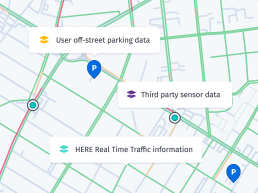
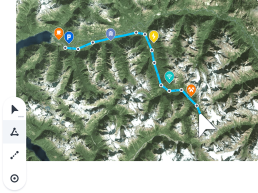
Always accommodate the requirements you might have in the future to ensure your investment holds value. Think about the possible directions your business might take and the additional requirements these developments prompt.
A range of features should be available to ensure that you can analyze and visualize data in a way that makes it easy for you to report to any audience. Try to anticipate the data visualizations that your internal and external stakeholders will respond to, then ensure that they will be available in your new tool.
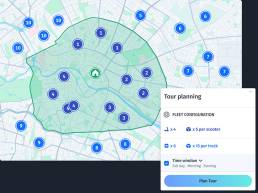
These are the essential features that we think should be present in a geomarketing tool:
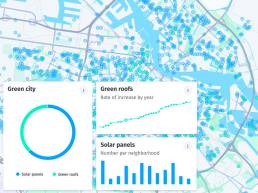
Data Integration
An obvious one, but check that the tool allows you to easily import and export data in the format you need and that it will integrate with your other applications. It should support a wide variety of sources, including databases, spreadsheets, and APIs. Look for integration with CRM systems, third-party providers, and common social media platforms.
Geospatial Data Visualization
All good tools should offer a variety of ways to view your data and understand patterns and trends more easily. At a basic level these should include:
- Standard maps
- Heatmaps
- Choropleth maps use the color mapping symbology technique
- Dot distribution maps are used for observing relationships between variables
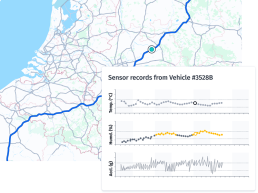

Other map types
- Proportional symbol maps are used to denote higher values at locations with larger symbols
- Isoline maps are used to connect locations that share the same value as your chosen variable
- Flow maps are used to chart the movement of your variables between locations.
- Cartograms are useful when you want to view a variable’s spatial distribution instead of specific geographic accuracy
Geographic Segmentation
Once you have your visualized data, you’ll need the ability to divide locations into smaller segments based on variables such as demographic profile, behavior, and other criteria that will allow you to plan and execute marketing activities that target ultra-specific consumer groups.
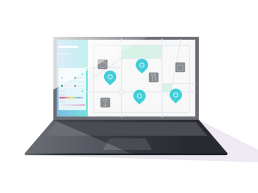
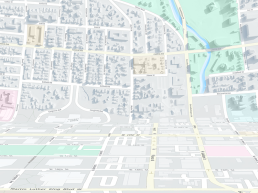
Competitor Analysis
As per most marketing disciplines, successful geomarketing requires that you understand your competitors as well as your own business. This isn’t limited to location data; you also need to grasp their market presence and reach in order to spot opportunities to grow your own.
Geocoding and Reverse Geocoding
As you map and analyze data you will need the functionality to convert addresses and places into latitude and longitude coordinates. Reverse geocoding converts coordinates into recognizable locations.

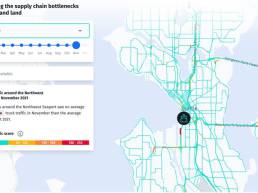
Routing and location optimization
If your business includes physical outlets or delivery services, you must ensure that your selected tool has routing and optimization features in order to plan routing effectively and reduce travel time and costs for your delivery network.
Other features to look for
- Data analytics and insights
- Mobile compatibility
- Real-time data
- Privacy and data security
- Customization
- Collaboration and sharing features
- Support and training
- Scalability
- Cost-effectiveness

Getting started with Geomarketing
Goals
You must first define your goals and what you want to achieve from geomarketing. It will consistently deliver better customer targeting but what does that mean to your business? Greater footfall for a physical store, increasing your customer base in specific markets or for particular products? Ensure that your objectives are SMART – specific, measurable, achievable, relevant, and time-bound.
Geographic Data
Next, collect the geographic data that will support detailed and accurate analysis. This data should include basic demographic information, buying patterns, customer preferences, and locations of competitors.
GIS software
This data should then be integrated with GIS software, which enables visualization and spatial analysis. This will output maps and other visualizations that capture the patterns and trends which provide valuable insights for your business, presented clearly and concisely. This will allow you to identify regional trends, customer hotspots, and critically, untapped markets.
Tools
Try out some tools that best fit the way you prefer to see your data visualized and fit within your budget. We recommend HERE for an always up-to-date, secure, and configurable solution.
Competitor analysis
Knowing where your competitors are located gives you an edge as you grow your business. Conduct a competitor analysis to pinpoint potential opportunities and threats in each of your markets.
Marketing strategy
Next, identify the ideal targets for increased marketing activity based on the knowledge you have acquired. Take into consideration variables such as proximity to physical stores, if relevant, plus population density and typical consumer behavior. Ensure that your marketing strategy includes these new objectives and can support localized promotions and messaging.
Monitor & Measure
Don’t forget to monitor and measure the results of your geomarketing activities. Track their performance according to your strategy’s KPIs, which should include indicators that relate to sales, customer engagement, and foot traffic if applicable.
Strategy
It’s important to review your strategy and refine it regularly. Geomarketing can produce time-sensitive data that can be used to provide insights your business can act on immediately.
Developments
Keep an eye on changes and developments in your market and the economy as a whole. Always adhere to privacy and data regulations and ask for consent as needed. Ensure that your customer information is secure and communicate this via your brand, to gain vital consumer trust.
How does geomarketing work in practice?
It’s much easier to anticipate your requirements if you can compare them to real-life examples of geomarketing in practice. Omnichannel retail is the convergence between AI, ground truth technology, and location technology.Let’s look at how geomarketing is used by a fictional retailer in this space, national sportswear retailer JumpNow. JumpNow has physical stores, an e-commerce website, and a mobile app.
Store locator and inventory check
JumpNow’s store locator on the website and app displays real-time inventory information for the selected store. This encourages customers to visit the physical store, where they may also make further purchases.
Location-based offers
JumpNow uses geofencing to trigger a personalized offer if a registered customer, who has downloaded the app, is close to one of their stores. When the customer reaches a set proximity to a physical store, JumpNow sends a notification with a discount for an item they viewed on the website or via the app, or a store-wide promotion.
Targeted mobile advertising
JumpNow uses data on previous purchasing behavior and current location to create targeted mobile ads. If a customer is close to a gym or sports center, JumpNow can display ads for related products. Regional weather data and climate can also be used to promote suitable products at the right times.
Instore pickup and returns
Online customers can buy products online and collect from their local store, instead of waiting at home for a delivery. The JumpNow app can provide navigation instructions to the nearest store from the customer’s current location.
Instore beacons
When a customer who had the JumpNow app installed visits a physical store, a beacon interacts with their mobile device. Data from previous purchases and customer preferences can be used to create messages, recommendations, and coupons.
